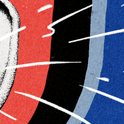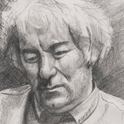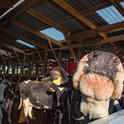Ali Smith is an unrepentant stylist. She is not interested in “transparent” prose that aims to melt before the reader’s eyes. Instead she revels in the artifice of language, in poetic free-flow wordplay. Like her previous works, The Accidental and There But For The, Smith’s latest novel how to be both—which has been longlisted for the Man Booker prize—reads as if she has summoned words from some region of the unconscious and released them in a trance. Yet this is careful artifice as well.
How to be both has two narratives, one historical and the other set in the present. In 15th-century Italy, a girl shows remarkable promise as an artist. Her father dresses her as a boy, so she can serve an apprenticeship. Ironies ensue. In present-day Britain, a girl called George struggles to contend with finitude and mortality. Why create anything at all when those we love must die and then we will be snuffed out too? “Is this real? George says. Is it hypothetical? Does that matter?”
Smith’s publishers have printed two versions of the novel, with the running order inverted from one to the other: present then historical/historical then present. (There are no further “spot the difference” anomalies, and the fact there are two different versions of the novel will not be alluded to on the dust jacket. It will be pot luck which version you happen to buy.) Who cares, the novel seems to say, which order things are in? “Is it happening now or in the past?” asks George. The structural inversion is a wry piece of tribute-modernism, parodying arbitrary taxonomies and so-called certainties. Further pleasure lies in Smith’s fervent, vital, incantatory prose, which is entirely her own.
How to be both has two narratives, one historical and the other set in the present. In 15th-century Italy, a girl shows remarkable promise as an artist. Her father dresses her as a boy, so she can serve an apprenticeship. Ironies ensue. In present-day Britain, a girl called George struggles to contend with finitude and mortality. Why create anything at all when those we love must die and then we will be snuffed out too? “Is this real? George says. Is it hypothetical? Does that matter?”
Smith’s publishers have printed two versions of the novel, with the running order inverted from one to the other: present then historical/historical then present. (There are no further “spot the difference” anomalies, and the fact there are two different versions of the novel will not be alluded to on the dust jacket. It will be pot luck which version you happen to buy.) Who cares, the novel seems to say, which order things are in? “Is it happening now or in the past?” asks George. The structural inversion is a wry piece of tribute-modernism, parodying arbitrary taxonomies and so-called certainties. Further pleasure lies in Smith’s fervent, vital, incantatory prose, which is entirely her own.













